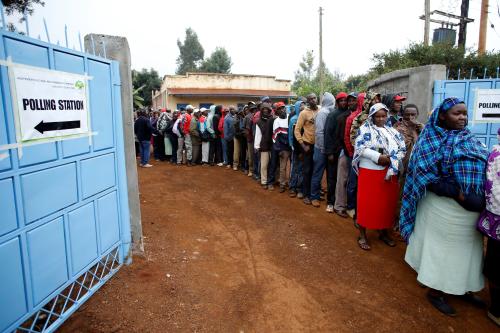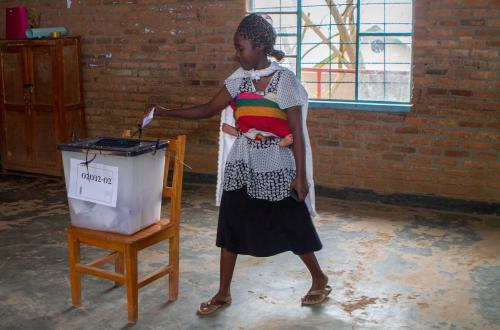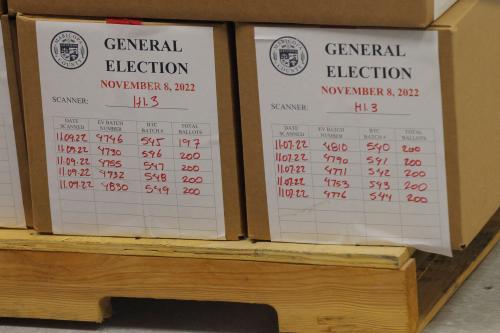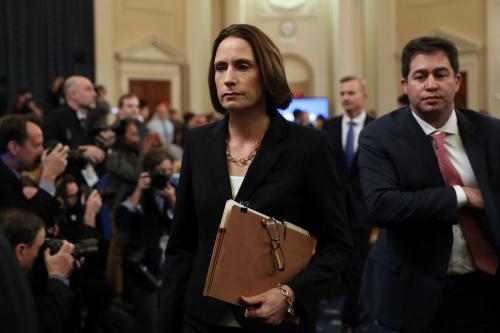Angola elects its first new president in 38 years
Angolans went to the polls on Wednesday to elect their first new president in 38 years as President Jose Eduardo de Santos steps down from office. His ruling party, the People’s Movement for the Liberation of Angola (MPLA), won the August 23 legislative elections, earning 64.6 percent of the vote. The main opposition party, the Union for the Total Independence of Angola (UNITA), earned 24.6 percent of the votes. In third place came the Broad Consensus for Angolan Salvation-Electoral Coalition party with 8.6 percent. Voter turnout reached approximately 77 percent. Jose Pedro Katchiungo, a UNITA official, has claimed that the election results were fabricated and that UNITA officials designated to monitor the vote had difficulties accessing the polling stations.
The MPLA will continue to control the country’s 220-member parliament. Former Defense Minister João Lourenço, who was hand-picked by former President Dos Santos to head the ruling party, will now serve as Angola’s third president. The MPLA has ruled the country since Angola gained independence from Portugal in 1975. Some voters interviewed by Reuters voiced a lack of trust in the opposition party’s ability to rule the country.
Angola, a country that is highly dependent on oil exports, has been crippled by declines in commodity prices in recent years. The country experienced zero growth and 30 percent inflation in 2016. In response, President-elect João Lourenço has pledged to boost growth, diversify the economy, and fight corruption in sub-Saharan Africa’s third-largest economy.
Power dispute may lead to layoffs in Zambia’s mining sector
Glencore’s copper mining unit in Zambia, Mopani Copper Mines, is in a dispute with its power supplier, Copperbelt Energy Corp., over new electricity fees introduced by the government in 2017. Copperbelt buys power from the state-owned electricity company and sells it to mines throughout Zambia, including Mopani. When the government raised electricity prices industry-wide earlier this year, Copperbelt passed on the new tariff to Mopani. Mopani has said that the fee increase was not agreed upon in its arrangement with Copperbelt and so has refused to pay the new price. In turn, Copperbelt reduced the power supply to Mopani Copper Mines from 190 megawatts to 94 megawatts, which has constrained operations and is costing the firm $3 million a day in lost revenues. Due to the power cuts, Mopani has stated this week that it will have to scale back its operations and dismiss as many as 4,700 direct employees.
The Zambian government argues that the increased power fees are necessary for the country to cover the costs of its imports and electricity from private producers. Meanwhile, all mining companies other than Glencore’s Mopani Copper Mines have agreed to pay the price increase. Zambian Minster of Mines Christopher Yaluma has called on Mopani to find a solution to the dispute that does not affect workers and to emulate other mining firms already paying the revised electricity tariffs.
Power Africa report highlights successes and challenges of US initiative
On Monday, August 21, USAID released the 2017 Power Africa annual report, which assesses the progress and challenges of the Power Africa initiative launched under President Barack Obama in 2013. The report notes that the initiative has helped projects generating more than 7,200 megawatts reach financial close. More than half of this capacity to date has been added through natural gas-based power plants. The report also focuses on the significant potential for geothermal energy in East Africa, where USAID is supporting 20 projects—15 of which are located in Kenya—to produce 2,300 megawatts. Power Africa has taken a broad approach to energy types and connection methods, promoting solar, wind, natural gas, and hydro projects among others.
Furthermore, the report highlights Power Africa’s role in supporting private sector firms, which have connected 10.6 million new households—or approximately 53 million people—to power solutions across sub-Saharan Africa. However, small-scale, basic power systems such as solar lanterns account for two-thirds of these new connections. In the report, U.S. Coordinator for Power Africa Andrew Herscowitz states, “Our intent is to expand beyond our initial focus on solar lanterns and renewable energy to support more on-grid power projects in natural gas and other sources, as our funding allows.”
Moving forward, based on the current rate of progress, it is likely that Power Africa will miss its initial goal of connecting 20 million households and businesses to power solutions by 2018, according to the Daily Nation. However, Power Africa will continue to work towards its revised and expanded goal: To increase sub-Saharan Africa’s installed generating capacity by 30,000 megawatts and add 60 million new connections by 2030.







Commentary
Africa in the news: Angola votes, Glencore mining operations slowed in Zambia over power dispute, and Power Africa progress report released
August 25, 2017